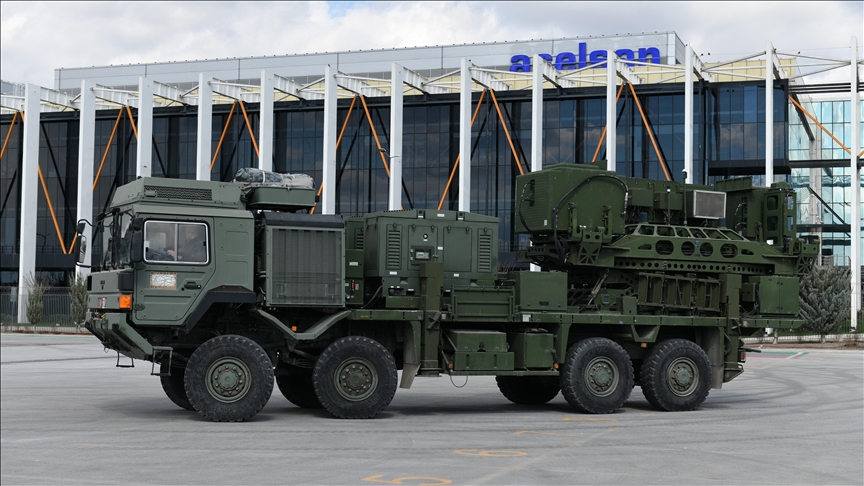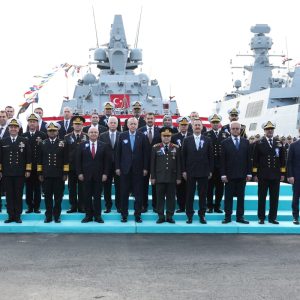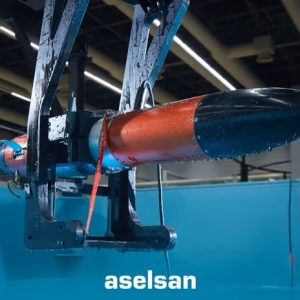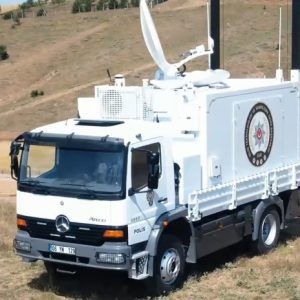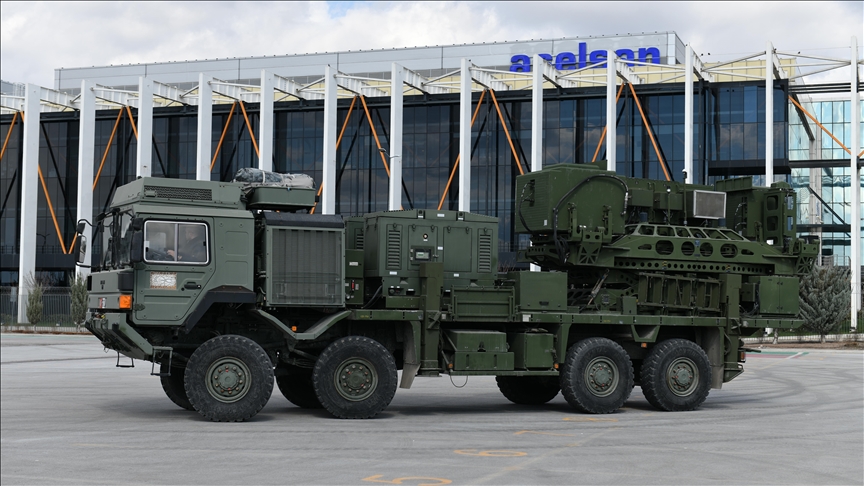
ASELSAN KORAL modernization boosts Türkiye’s EW edge with upgraded subsystems. Read our analysis and implications.
ASELSAN KORAL modernization marks a deliberate step in Türkiye’s push to dominate the electromagnetic spectrum, with the land‑based electronic support (ES) and electronic attack (EA) system upgraded across critical subsystems to meet emerging threat sets and multi‑target scenarios.
Key Facts
- Program: KORAL land‑based ES/EA suite for radar denial and deception.
- Status: Modernization completed; delivery to TSK reported by Anadolu Ajansı.
- Role: SEAD support, emitter geolocation, wideband jamming and deception.
- Concept fit: Integral to Türkiye’s multi‑layered ÇELİKKUBBE air and missile defence construct.
- Doctrinal context: Consistent with NATO EMSO and Electromagnetic Battle Management directions.
What the upgrade changes—and why it matters
According to an official statement reported by Anadolu Ajansı, the Turkish Armed Forces have received a comprehensively modernized KORAL package, integrating ASELSAN’s latest generation modules across critical building blocks. While specific parameters remain classified, the thrust is clear: greater radiated power management, wider instantaneous bandwidth, faster reaction cycles, and improved deceptive techniques against agile, low‑probability‑of‑intercept radars. In short, ASELSAN KORAL modernization translates into higher survivability for friendly aircraft and ground formations operating inside a congested and contested electromagnetic environment.
On modern battlefields, control of the electromagnetic spectrum underwrites everything from target acquisition and air defence cueing to navigation resilience and data‑linked fires. Systems like KORAL sit at the heart of this competition. By pairing a high‑gain phased‑array architecture with software‑defined waveforms and advanced signal processing, the upgraded suite can detect, classify, and render hostile emitters ineffective through jamming and deception. The result is a persistent SEAD contribution that complicates an adversary’s kill chain at every stage.
Inside the architecture: ES and EA as a coherent whole
At system level, KORAL blends wide‑aperture Electronic Support measures for rapid detection and geolocation with a high‑power Electronic Attack element designed to impose effects from standoff ranges. In practice, this means simultaneous attention to multiple emitters across broad frequency ranges while sustaining tailored, track‑breaking energy on the most dangerous threats. The modernization effort enhances this interplay—ES gets faster and smarter; EA gets more surgical and persistent. That integrated approach is what allows ASELSAN KORAL modernization to deliver decisive gains without telegraphing its intentions.
Equally important is the human‑machine interface. NATO‑compliant consoles, automated libraries, and improved mission‑data flows shorten the sensor‑to‑effect loop. Operators can select from pre‑planned response sets or let the system’s adaptive modes tailor jamming and deception tactics on the fly. These are the quiet performance multipliers that often matter more than raw power figures.
Beam agility, power discipline, and spectrum manoeuvre
Modern emitters hop, chirp, and masquerade. Meeting them requires beam agility and disciplined power management rather than brute force alone. KORAL’s active electronically scanned array (AESA) approach enables rapid beam steering across sectors, while digital power‑apportionment keeps effects where they are most needed. In essence, ASELSAN KORAL modernization equips commanders with a tunable ‘spectrum scalpel’ that can blind, confuse, or decoy hostile sensors without unduly revealing friendly dispositions.
Operational meaning: SEAD, ÇELİKKUBBE integration, and joint C2
Turkey’s multi‑layered ÇELİKKUBBE Integrated Air and Missile Defence (IAMD) concept depends on resilient electromagnetic manoeuvre. In this construct, the modernized KORAL provides long‑range radar denial in support of SEAD, while feeding emitter intelligence to shooters and decoys across the architecture. This aligns with NATO’s Electromagnetic Spectrum Operations (EMSO) doctrine, which treats the spectrum as a manoeuvre space in its own right. In concrete terms, the upgraded suite increases the probability that friendly aircraft survive ingress, that enemy air defences miss or mis‑classify, and that joint fires land on time.
The C2 side matters just as much. Allied doctrine now emphasizes Electromagnetic Battle Management (EMBM) to deconflict blue emitters, synchronize effects, and avoid fratricide in the spectrum. ASELSAN KORAL modernization fits naturally into this shift: faster ES cuing and standardized data exchange make it easier to plan, rehearse, and execute complex, time‑sensitive missions with minimal spectrum frictions.
Industrial implications: a maturing sovereign EW ecosystem
Beyond the near‑term operational lift, the program signals a broader industrial reality: Türkiye’s sovereign electronic‑warfare base is maturing. ASELSAN’s modernization approach—refreshing critical subsystems, upgrading libraries, and expanding tactic sets—suggests a rolling‑block model that will keep KORAL tactically relevant without waiting for wholesale replacement. For a cluster like SAHA İstanbul, which concentrates defence‑industrial depth across primes, SMEs, and universities, this creates down‑stream opportunities in RF components, wideband amplifiers, thermal management, and test‑and‑evaluation infrastructure.
For export customers evaluating EW portfolios, the message is equally clear. Instead of a one‑off delivery, ASELSAN KORAL modernization shows a pathway for lifecycle superiority: adapt libraries, push software drops, and insert new hardware when it yields material advantage. In a market where threat radars evolve annually, that approach is a strategic differentiator.
Risk picture: counter‑EW, emissions control, and resilience
Adversaries will not stand still. Expect more LPI/LPE radars, irregular waveforms, and deception techniques designed to lure jammers into revealing themselves. The modernization’s emphasis on adaptive modes and beam agility helps, but emissions discipline and decoy management remain vital. Resilience also depends on logistics: keeping high‑power RF chains within thermal limits, protecting antennas and cabling, and sustaining calibration in rough environments. These are unglamorous tasks, yet they turn modernization into repeatable combat power.
Bottom line
ASELSAN KORAL modernization is not a press‑release upgrade. It materially enhances Türkiye’s ability to blind and confuse hostile radars at scale, strengthens SEAD options within the ÇELİKKUBBE architecture, and aligns with allied EMSO and EMBM practices. In the invisible fight for spectrum dominance, this is a substantive step forward.
For broader context on Europe’s evolving air‑defence and EW landscape, see our DSEI coverage in Defence Agenda’s post‑show analysis.
Learn more about the KORAL/NG family on ASELSAN’s official product page and read NATO’s public overview of electromagnetic warfare to understand how EMSO shapes joint operations.
Further Reading
• ASELSAN’s electronic‑warfare portfolio overview and KORAL/NG family — official pages.
* NATO’s public summary of Electromagnetic Warfare and allied doctrine on EMSO and EMBM.
* USAF and Joint Staff doctrine on Electromagnetic Spectrum Operations and battle management.
References
- Anadolu Ajansı, “ASELSAN’ın ‘görünmeyen gücü’ KORAL modernize edildi,” accessed 13 Sep 2025. Link
- ASELSAN — KORAL/NG product page. Link
- NATO — Topic: Electromagnetic Warfare. Link
- USAF Air Force Doctrine Publication 3‑85, Electromagnetic Spectrum Operations (2023). PDF
- Chairman of the Joint Chiefs of Staff Manual 3320.01D, Electromagnetic Battle Management (2025). PDF

